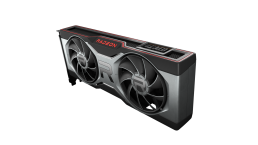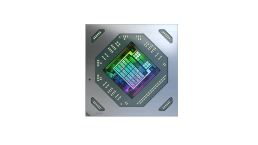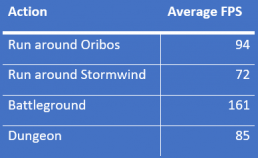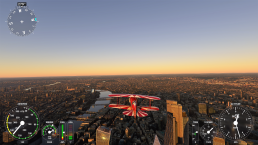The new AMD Radeon RX 6700 XT is the first mid-range graphics card from AMD to feature the RDNA 2 gaming architecture. It is packed with 96MB of Infinity Cache and 12GB of GDDR6 memory, and supports real-time ray tracing through 40 ray accelerators.
AMD unveiled the new card on March 3, 2021, announcing that it pushes the limits of gaming by enabling high refresh-rate 1440p performance with breathtaking visual fidelity, addressing the needs of the fast-growing 1440p gaming segment. We received reference cards as a review samples and we are putting AMD’s claims to the test.
Great Features
AMD Infinity Cache
According to AMD, the 96MB of last-level data cache on the GPU die — dubbed “Infinity Cache” — provides up to 2.5 times higher bandwidth at the same power level and memory width as traditional architectures, to provide a higher level of gaming performance. This proves to be a very important feature, especially given the 192-bit memory interface on the 12GB of GDDR6 RAM.
Typically, a narrow bandwidth can hinder performance and, in specific gaming cases, create a stuttering experience. This was not the case with the AMD Radeon RX 6700 XT, as we will see in our benchmarking and gaming test results.
Ray Tracing
In addition to FidelityFX visual enhancement effects and variable-rate shading functionality (which allows the hardware to focus the rendering work where it is most needed), AMD added a hardware ray accelerator to each of the Radeon RX 6700 XT’s 40 compute units. This means that next-gen games that take advantage of DirectX12 Ultimate to implement ray tracing through DXR will be fully supported.
As with all ray tracing implementations, frame rate performance is impacted, so games developers will need to implement this intelligently and give the user the flexibility to tailor their game settings to achieve the desired level of performance. AMD has announced that FidelityFX Super Resolution is being developed for release later in 2021.
This technology will allow increased performance in ray-traced games by rendering at a lower native resolution such as 1080p, and then upsampling the output to higher resolutions such as 1440p.
AMD Smart Access Memory
The Resizable Base Address Register, also known as Resizable BAR, is a feature that increases performance by allowing the processor, via the PCIe bus, to fully access the entire graphics card’s memory (VRAM) directly, rather than in 256MB pages. AMD is the first GPU vendor to introduce Resizable BAR support as Smart Access Memory (SAM) technology.
SAM requires a platform based on an AMD Ryzen 5000 Series processor, Radeon RX 6000 Series graphics card, and a 500 Series chipset-based motherboard. AMD has also expanded support to select Ryzen 3000 Series processors. We checked by using Ryzen R9 3950X and R7 3700X CPUs on X570 and B550 motherboards from ASRock and Asus, and it works.
Price and Availability
AMD’s suggested end-user pricing for the Radeon RX 6700 XT graphics cards starts at $479. However, it is hard to determine the average selling price when the cards are completely unavailable. This makes it even harder to determine the value based on price per performance, or in comparison with other cards.
Various conditions are making it almost impossible for gamers to purchase a new graphics card, mainly the vastly increased GPU demand due to the pandemic and the resurgence of crypto mining. This has resulted in toxic practices motivated by greed, like scalping and direct sales for highest bidders on the channel level, instead of distributing to tech retailers and e-tailers at regular prices with good margins.
From its side, AMD has increased production and has taken several steps to help prevent bots from purchasing products on AMD.com, with manual auditing of orders to limit the ability to order multiple cards of the same model. The company also provided detailed guidance to retail/e-tail and board partners to help address this issue.
Test Systems
Our main tests and benchmarks were conducted on an AMD Ryzen R7 3700X processor, installed on an ASRock X570 Taichi motherboard and equipped with 16GB G.skill DDR4 3200MHz CL14 Trident Z RAM (2x8GB). We also tested the card’s 4K performance with a compact build featuring an AMD Ryzen R9 3950X with an ASRock X570M Pro4 motherboard.
We opted for a Ryzen 3000 Series processor in our benchmarking build, as this offers a good representation of a real-world mid-range to high-end system: Users are likely to upgrade their Vega or Navi first-gen card to the RX 6700 XT to achieve the best possible performance boost for the price, without necessarily upgrading the CPU to a Ryzen 5000 Series at the same time.
Gaming Performance
At 1440p resolution with the highest quality settings, Cyberpunk 2077 ran at an average of 77fps, and the demo for the new game Outriders ran at 88fps. We had some Victory Royale wins in Fortnite at 140fps, taking advantage of Radeon Anti-Lag.
What we found most impressive is World of Warcraft’s performance with ray tracing enabled:
Godfall — a game that uses Unreal Engine 4 and the DirectX12 Ultimate application programming interface —ran at an average of 75fps with ray tracing, while the older Shadow of the Tomb Raider was 54fps with ray-traced shadows. These results mean that ray tracing is available and playable at this level, and not limited to the high-end cards.
Dropping the settings from ‘ultra’ to ‘high’ would give even faster performance with little to no compromise in quality, especially with ray tracing enabled.
We also gave the Radeon RX 6700 XT a good workout with Microsoft Flight Simulator 2020 in 4K with high settings and render scale set to 90%. Our benchmarking PC easily broke the 30fps barrier despite the demanding software, usually sitting in the 35–40fps range, which is really good performance overall. In comparison, the faster (and pricier) Radeon RX 6800 XT achieves a similar frame rate on ultra settings at 110% render scale, so RX 6700 XT owners can achieve comparable results with only a small compromise on quality. World of Warcraft also runs well, averaging 54fps with ray tracing enabled.
So, the Radeon RX 6700 XT is a good 4K gaming card, suitable for high or ultra settings on traditional rasterized games using typical legacy HDMI 2.0x output with a refresh limit of 60Hz, as well as for those who don’t need the very highest quality in games such as Flight Simulator 2020.
IDC Opinion and Conclusion
Generational advancement in GPUs (and CPUs as well) has long been dependent on the manufacturing process and shrinking transistors to achieve faster performance with less power consumption and heat dissipation. But AMD is now adding design to the equation, with elements such as Infinity Cache and Ray Accelerators, which have made the Radeon RX 6700 XT competitive enough to exceed our expectations, even when using a 192-bit memory interface.
So, while the sweet spot for this card is mainly 1440p gaming, it’s pretty awesome for many at 4K —especially as most 4K monitors to date are limited to 60Hz refresh rates with the HDMI2.0 interface. The Radeon RX 6700 XT is listed for €502, while the Radeon RX 6800 is for €606 at AMD.com.
Both cards were out of stock at the time of writing this review. So hypothetically, there is an approximately €100 difference between the two cards, and gamers on budget can use this saving to upgrade other hardware components that will benefit their system’s performance, such as a Gen 4 NVMe drive. Those who do not wish to compromise, or are eyeing a 4K upgrade, can opt for an RX 6800 XT for €180 Euro more.
The good news for gamers is that the older Radeon RX 5700 achieves a hash rate of 54MHs in crypto mining while the RX 6700 XT manages 43MHs, according to our quick NiceHash tests. AMD says mining is especially sensitive to bus width, so with a smaller bus width and Infinity Cache, the RDNA 2 card is optimized for gaming first.
The sad news is that has not translated into wider availability. We recommend that AMD has a serious discussion with its board partners and distributors on how to ensure supply to the shelves and online. Issuing recommendations and guidance to the retailers/e-tailers would be a wonderful step if the cards were readily available on the market. But the problem is that those stores are not getting the cards in the first place.
Finally, a good alternative to a build-your-own PC, and a means of overcoming the shortage of various components, is to buy a prebuilt machine from a renowned vendor such as Dell, HP, or Lenovo, or a good systems integrator. Vendors such as these are now taking advantage of AMD’s advanced performance, and more than 40 vendors and system integrators are launching desktop PCs powered by the new graphics card, with examples including the HP OMEN 25L and 30L.
To learn more about our upcoming research, please contact Mohamed Hefny or Andrew Buss, or head over to https://www.idc.com/eu and drop your details in the form on the top right.









